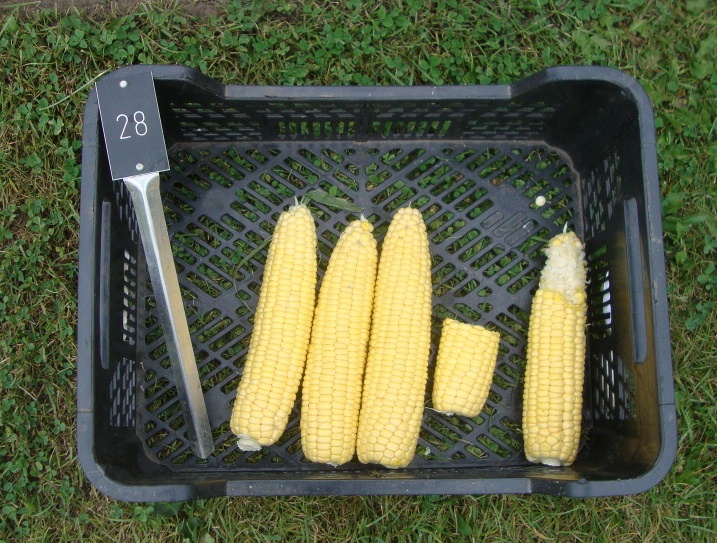Zea mays 'Ovation'
sweet corn 'Ovation'
This early to mid-season 'supersweet' variety produces large cobs of 20 to 23 cm long, filled to the tip with delicious sweet kernels. It’s vigorous and consistent so looks impressive in the allotment. Sow indoors: April to May. Sow / plant outdoors: May. Harvest: August to September

Size
Ultimate height
1.5–2.5 metresTime to ultimate height
1 yearUltimate spread
0.5–1 metresGrowing conditions
Moisture
Moist but well–drainedpH
Acid, Neutral, AlkalineColour & scent
| Stem | Flower | Foliage | Fruit | |
| Spring | Green | |||
|---|---|---|---|---|
| Summer | Green | |||
| Autumn | ||||
| Winter |
Position
- Full sun
Aspect
East–facing or South–facing or West–facing
Exposure
Sheltered Hardiness
H2Botanical details
- Family
- Poaceae
- Native to GB / Ireland
- No
- Foliage
- Deciduous
- Habit
- Columnar upright
- Genus
A genus of five, large, flowering plants the grass family. The most important species, Zea mays is widely cultivated food crop. Male flowers are borne in large, terminal inflorescences (tassels) and female flowers are hidden in clusters in the leaf axils
- Name status
Accepted
How to grow
Cultivation
Grow in a sunny, sheltered spot in soil that has been enriched with well-rotted organic matter. Sweetcorn can tolerate many soil types but prefers well-drained soils with a pH between 5.5 and 7.0. As this is a ‘Supersweet’ type, avoid growing next to other varieties to prevent cross pollination if you want the cobs to retain their sweet taste. 'Supersweet' varieties can also be more temperamental so the seeds need to be sown at the correct time, at the correct depth and in the correct temperature - check the packet for more information. Harvest from August to September. See sweetcorn cultivation for futher information.
Propagation
Sow seeds undercover from mid-spring in pots or modules and then plant out May - June after hardening off and the last frosts have passed. Alternatively sow 'in situ' from late spring to early summer. Always plant in a grid pattern to ensure pollination. See sowing vegetable seeds
Suggested planting locations and garden types
Pruning
No pruning required.
Pests
May be susceptible to damage from birds, slugs, mice and badgers.
Diseases
May be susceptible to smuts which appear as large galls on the cobs and stalks in hot weather.
Get involved
The Royal Horticultural Society is the UK’s leading gardening charity. We aim to enrich everyone’s life through plants, and make the UK a greener and more beautiful place.